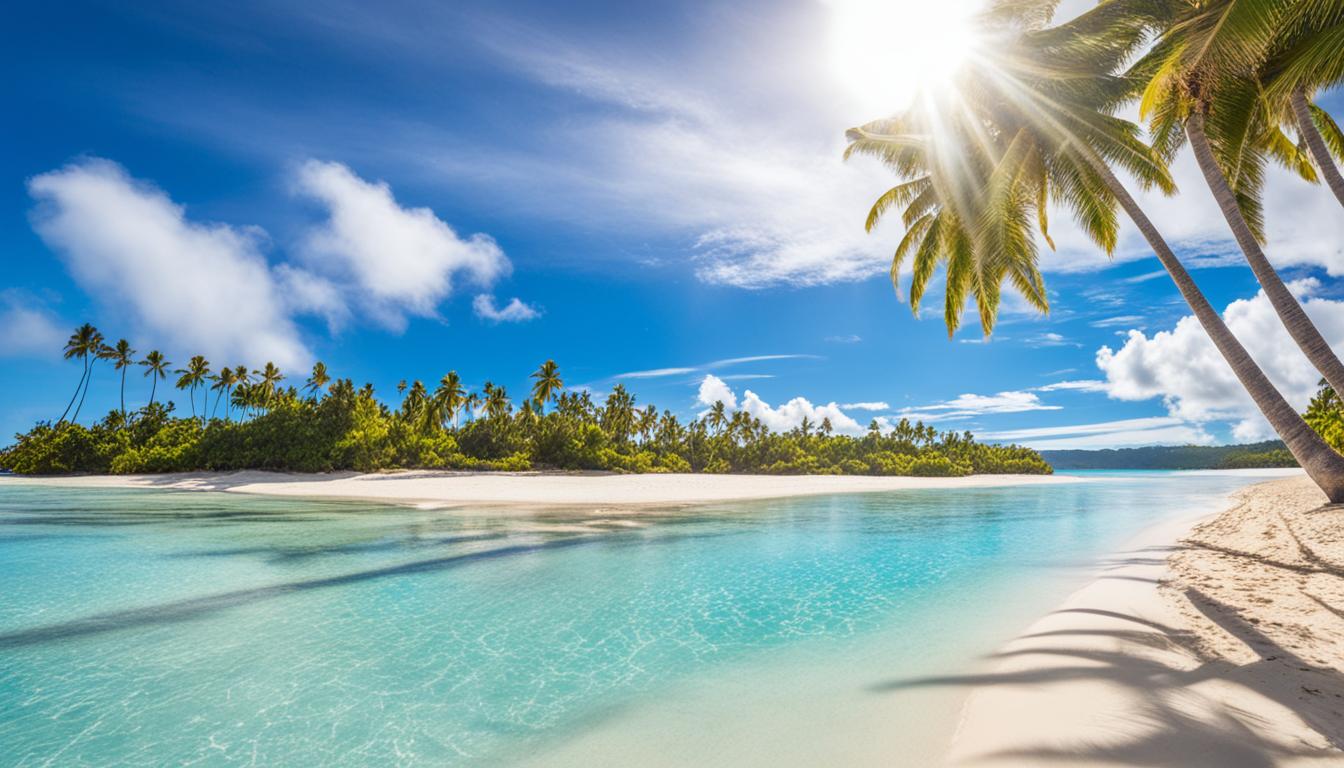Did you know that the Cook Islands receive an average of 201 days of sunshine per year? That means you have plenty of opportunities to soak up the tropical beauty of this stunning destination!
Imagine yourself lying on a pristine white-sand beach, with clear turquoise waters stretching out before you. The warm sun kisses your skin as gentle sea breezes rustle through the palm trees overhead. This is the picture-perfect paradise of the Cook Islands, where time seems to slow down and worries melt away.
Whether you’re planning a romantic getaway, a family vacation, or an adventurous trip, the Cook Islands offer a range of experiences to suit every traveler’s taste. But to make the most of your trip, it’s important to choose the best time to visit and understand the climate of the islands.
In this comprehensive guide, we will take you through the best time to visit the Cook Islands, providing a month-by-month breakdown of the climate, weather tips, and factors to consider when planning your dream vacation. So get ready to discover the secrets of this tropical paradise and start planning your ideal Cook Islands trip!
Key Takeaways:
- Experience an average of 201 sunny days per year in the Cook Islands.
- Choose the best time to visit based on your preferences and activities.
- Plan ahead to make the most of your Cook Islands vacation.
- Consider the monthly climate guide to find your ideal travel month.
- Take advantage of the shoulder seasons for fewer crowds and lower prices.
Monthly Climate Guide for the Cook Islands
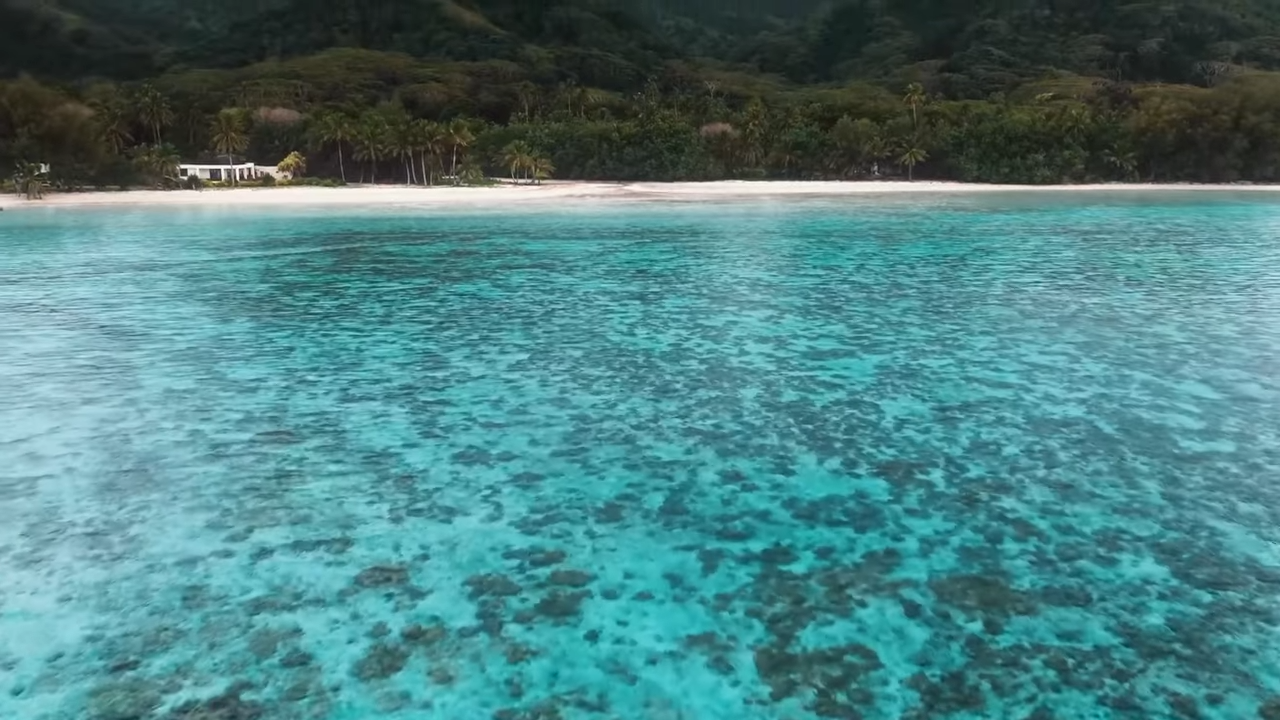
Here is a month-by-month guide to the weather in the Cook Islands. In January and February, which are the middle of the Cook Islands’ summer, temperatures are at their hottest and there is a higher chance of heavy rainfall, although continuous days of rain are rare.
The climate in the Cook Islands remains warm from March to April, with occasional rain. May to June brings slightly cooler temperatures and less rainfall. July and August are the driest months, with maximum sunshine and minimal rainfall. September and October still offer pleasant weather, while November experiences slightly warmer temperatures. December marks the start of the wet season, with a greater chance of rain.
Monthly Climate Guide for the Cook Islands
| Month | Average Temperature (°F) | Rainfall (inches) |
|---|---|---|
| January | 78 – 86 | 7.2 |
| February | 78 – 86 | 7.0 |
| March | 75 – 84 | 5.5 |
| April | 75 – 84 | 4.7 |
| May | 73 – 81 | 3.4 |
| June | 70 – 78 | 2.8 |
| July | 68 – 76 | 2.2 |
| August | 68 – 76 | 2.2 |
| September | 70 – 78 | 2.9 |
| October | 73 – 81 | 3.8 |
| November | 75 – 84 | 5.7 |
| December | 77 – 86 | 6.2 |
Insider tip:
Although the Cook Islands experience occasional rainfall throughout the year, the best time to visit is during July and August, when you can enjoy maximum sunshine and minimal rainfall. September and October also offer pleasant weather without the higher temperatures of the summer months.
Best Times to Visit the Cook Islands
The Cook Islands offer a tropical paradise with their year-round agreeable climate. When planning your trip, it’s important to consider the best times to visit in order to make the most of your vacation. The ideal period is from April to November, during the driest months, when the weather is most favorable for outdoor activities and exploring the islands.
If you prefer to avoid crowds and higher prices, the shoulder seasons of April-May and September-October are excellent options. During these months, the weather is still pleasant, and you can take advantage of cheaper rates for accommodations and tourist activities.
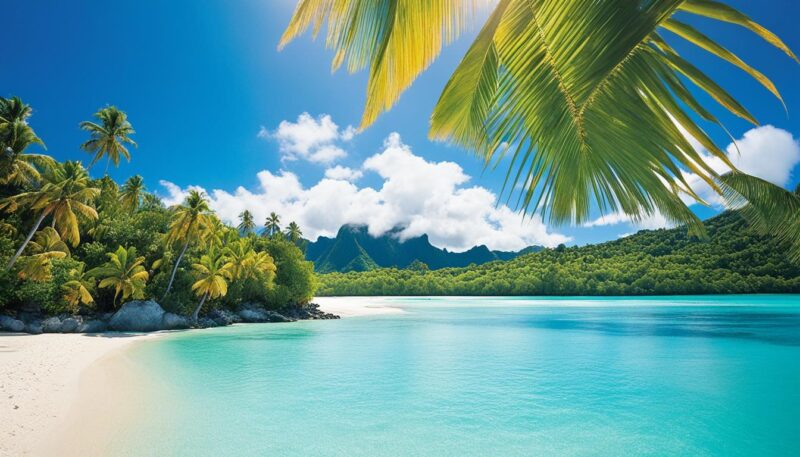
“The best times to visit the Cook Islands are from April to November, during the driest months.”
December to March, although part of the wet season, can still be a viable time to visit if you don’t mind occasional rain showers and want to take advantage of lower prices. It’s worth noting that rainfall is possible throughout the year in the Cook Islands, so be prepared for sporadic showers even during the dry season.
When planning your visit, consider the activities you wish to engage in and your personal preferences. Whether you’re looking for perfect beach days, water sports and snorkeling, or a more laid-back experience, the Cook Islands offer something for everyone.
| Time of Year | Weather | Pros | Cons |
|---|---|---|---|
| April to November (Dry Season) | Pleasant with minimal rainfall | Perfect for outdoor activities and exploring | Possible higher prices and increased crowds |
| April-May & September-October (Shoulder Seasons) | Pleasant weather and cheaper rates | Avoid peak tourist season, fewer crowds | Some rainfall possible |
| December to March (Wet Season) | Occasional rain showers, lower prices | Possible whale watching opportunities | Higher chance of rain and cloudy days |
Ultimately, the best time to visit the Cook Islands depends on your personal preferences and priorities. No matter when you choose to go, you’ll be greeted with the natural beauty and warm hospitality that make the Cook Islands a truly unforgettable destination.
Weather Considerations for the Cook Islands
When planning a trip to the Cook Islands, it’s crucial to take into account the weather conditions that you may encounter during your stay. The Cook Islands have a tropical climate, which means you can expect warm temperatures and steady humidity levels throughout the year. The average temperature ranges between 75°F and 86°F, creating an ideal environment for outdoor activities and exploration.
It’s important to note that rain is possible at any time, even during the dry months. The Cook Islands’ weather forecast can give you an idea of what conditions to expect during your visit and help you plan accordingly. The wet season occurs from December to March, and although it may bring occasional storms and cloudy days, continuous rainfall for an extended period is unlikely.
Here is an overview of the weather patterns for each season in the Cook Islands:
Dry Season (April to November)
The dry season in the Cook Islands is characterized by minimal rainfall and pleasant weather. This period is considered the best time to visit if you prefer sunny days and clear skies. The temperature remains warm and comfortable, making it ideal for enjoying water activities, exploring the islands, or simply relaxing on the pristine beaches.
Wet Season (December to March)
The wet season brings occasional storms and increased humidity to the Cook Islands. While rain showers are more frequent during this time, they usually last only for a few hours, allowing for plenty of sunshine throughout the day. The wet season can be an excellent opportunity to experience the lush greenery of the islands, witness beautiful rainbows, and take advantage of lower rates for accommodation and activities.
When planning your trip to the Cook Islands, it’s essential to pack appropriate clothing and gear for different weather conditions. It’s advisable to bring lightweight and breathable clothing, as well as rain gear and mosquito repellent. Don’t forget to apply sunscreen regularly, as the sun can be intense in tropical regions.
Regardless of the season you choose to visit, the Cook Islands offer a remarkable experience with their natural beauty, turquoise waters, and warm hospitality. Enjoy your journey and embrace the ever-changing weather that adds its own unique charm to this tropical paradise.
Factors to Consider for Timing Your Visit
When planning the perfect trip to the Cook Islands, there are several important factors to consider. Whether you’re a seasoned traveler or a first-timer, understanding these aspects will help you make the most of your vacation.
1. Best Time to Visit Cook Islands
If you’re looking for the best weather with minimal rainfall, the peak tourist season in the Cook Islands is from June to August. During these months, you can expect maximum sunshine and clear skies, perfect for outdoor activities and beach relaxation. However, it’s important to note that prices may be higher during this period, and popular tourist spots may be more crowded.
2. Cook Islands Vacation Planner
For those on a budget, the wet season from December to March can offer more affordable rates for accommodations and activities. The trade-off is that you may experience occasional rain showers, but they are usually brief. The upside is that the beaches are often empty, providing a more secluded and tranquil atmosphere for relaxation. Additionally, if you visit during the wet season, you may have the opportunity to witness migrating whales, which typically occurs from June to October.
3. Cook Islands Best Time of Year
Another factor to consider when planning your trip to the Cook Islands is your personal preferences and interests. If you enjoy vibrant festivals and cultural events, consider visiting during the annual Cook Islands Festival held in April. This celebration showcases the rich Polynesian heritage of the islands through music, dance, and traditional performances.
4. Best Time to Travel to Cook Islands
When deciding on the best time to travel to the Cook Islands, it’s crucial to take into account the activities you wish to engage in. Whether it’s snorkeling, diving, or hiking, certain seasons may be more suitable for specific pursuits. For example, the dry season from April to November is ideal for water activities, as the crystal-clear waters provide excellent visibility. On the other hand, if you’re interested in birdwatching, the wet season brings lush vegetation and increased bird activity.
5. Cook Islands Travel Tips
Lastly, it’s essential to gather as many travel tips as possible to make your Cook Islands experience unforgettable. Research the local customs and etiquette, as well as the best places to eat and shop. Learn a few basic phrases in the local language, Cook Islands Māori, to connect with the friendly locals. Additionally, be sure to pack appropriate clothing and essentials, such as sun protection and insect repellent, to ensure a comfortable and enjoyable stay.
By considering these factors and planning accordingly, you can optimize your visit to the beautiful Cook Islands. Whether you’re seeking sunny skies or embracing the lush tropical rain, this exotic destination offers a unique experience year-round.
Ideal Month for a Cook Islands Trip
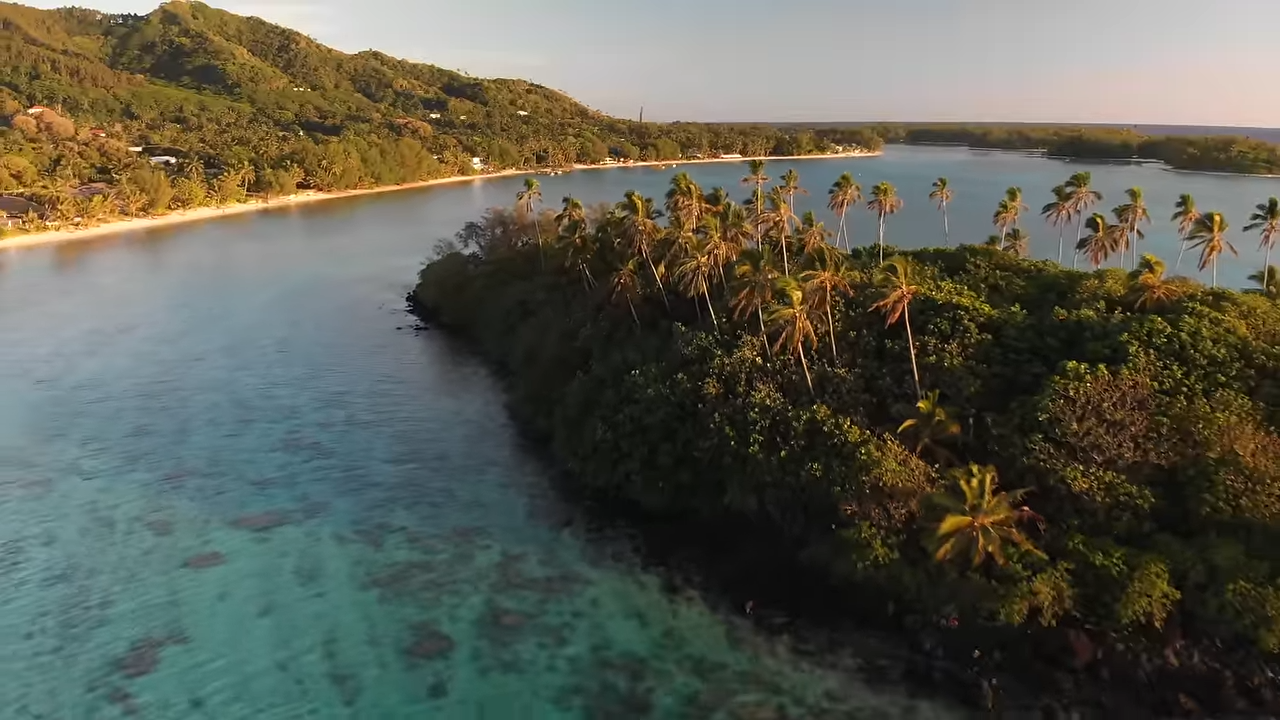
While planning a trip to the Cook Islands, choosing the perfect time to visit can greatly enhance your experience. One month that stands out for its balmy weather, fewer crowds, and unique wildlife sightings is September. This month provides an idyllic setting for exploring the stunning landscapes and pristine beaches of the Cook Islands.
September in the Cook Islands offers pleasant temperatures that are not unbearably hot, making it an ideal time to engage in various outdoor activities. Whether you’re snorkeling in the crystal-clear waters, hiking through lush rainforests, or simply relaxing on the beach, the comfortable temperatures during this month will enhance your enjoyment.
Another advantage of visiting in September is the opportunity to avoid the Australian and New Zealand school breaks. With fewer tourists flocking to the Cook Islands, you’ll have more room to breathe, fewer crowds at the popular attractions, and a better chance of finding accommodations and activities with greater availability.
“September is an enchanting time to visit the Cook Islands. The weather is delightful, and there’s a sense of tranquility that allows you to truly immerse yourself in the island paradise.” – Traveler
Additionally, September coincides with the annual migration of humpback whales. These majestic creatures make their way through the waters surrounding the Cook Islands from June to October, offering a unique opportunity for wildlife enthusiasts to witness their captivating displays of breaching and tail-slapping.
For an unforgettable experience, embark on a whale-watching tour during your September visit. You’ll be able to witness these awe-inspiring creatures up close while enjoying the breathtaking beauty of the Cook Islands.
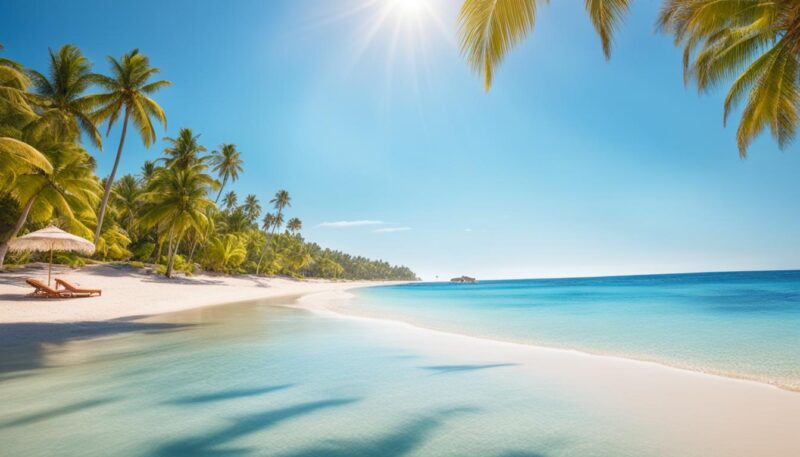
In conclusion, while the best time to visit the Cook Islands is subjective and depends on personal preferences, September is often regarded as an ideal month. The pleasant weather, lower crowds, and the chance to witness migrating whales make it a truly captivating time to explore this tropical paradise.
Conclusion
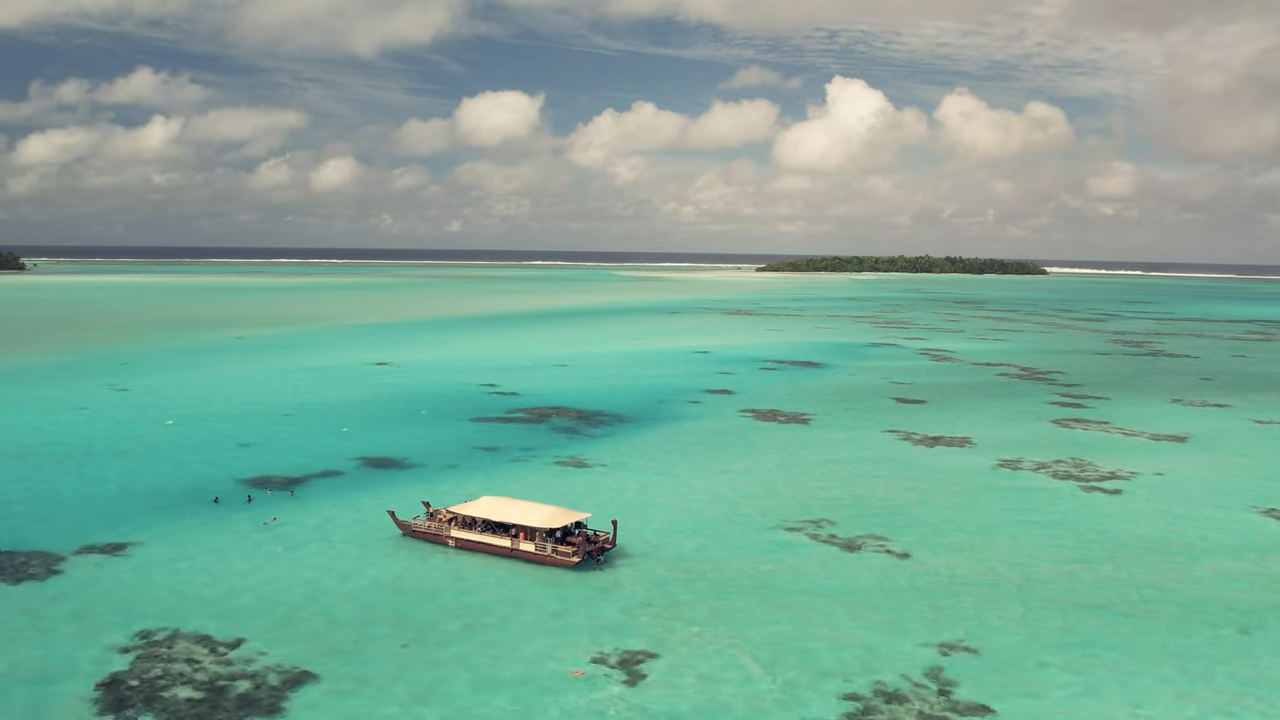
The Cook Islands are truly a tropical paradise, offering a year-round agreeable climate that makes it an ideal destination for any time of the year. While the best time to visit may vary depending on personal preferences, the period between April and November is generally considered the prime time due to lower rainfall. However, each month in the Cook Islands brings its own unique experiences and opportunities for travelers.
From June to October, visitors have the incredible chance to witness the majestic migration of whales, adding an unforgettable element to their trip. Whether you’re a nature enthusiast or simply want to bask in the glorious sunshine, the Cook Islands have something to offer throughout the year.
When planning your Cook Islands getaway, it’s crucial to consult the monthly climate guide to understand the weather patterns and pack accordingly. Take into account factors like pricing and crowd levels, as well as the activities you wish to engage in.
By doing so, you can ensure a memorable and enjoyable vacation tailored to your preferences. If you liked this article, be sure to also check out our article about: Best Beaches in Thailand
FAQ
When is the best time to visit the Cook Islands?
The best time to visit the Cook Islands is from April to November, during the driest months.
What is the climate like in the Cook Islands?
The Cook Islands have a tropical climate with temperatures ranging from 75°F to 86°F throughout the year.
When is the wet season in the Cook Islands?
The wet season in the Cook Islands lasts from December to March, with occasional storms and cloudy days.
Can I travel to the Cook Islands during the wet season?
Yes, travel is still possible during the wet season, as the rain usually lasts only a few hours.
What is the weather like in the Cook Islands in January and February?
In January and February, which are the middle of the Cook Islands’ summer, temperatures are at their hottest and there is a higher chance of heavy rainfall.
When are the driest months in the Cook Islands?
July and August are the driest months in the Cook Islands, with maximum sunshine and minimal rainfall.
What are the best times to visit the Cook Islands?
The best times to visit the Cook Islands are from April to November, during the driest months. The shoulder seasons of April-May and September-October are also great options to avoid crowds and higher prices.
Is rain possible throughout the year in the Cook Islands?
Yes, rainfall is possible throughout the year in the Cook Islands, although it is more frequent during the wet season.
What factors should I consider when planning a trip to the Cook Islands?
When planning a trip to the Cook Islands, consider the weather conditions, pricing, crowd levels, and the activities you wish to engage in.
When is the peak tourist season in the Cook Islands?
The peak tourist season in the Cook Islands is from June to August, offering the best weather with maximum sunshine. However, prices may be higher and popular tourist spots may be more crowded during this time.
When is a good time to visit the Cook Islands if I want to see migrating whales?
Migrating whales can be seen in the Cook Islands from June to October, making it a good time to visit if you are interested in whale watching.
What is an ideal month for a Cook Islands trip?
The start of September is often considered ideal for a Cook Islands trip, as the weather is balmy and it coincides with fewer crowds and more availability of accommodations and activities. It also offers the opportunity to witness migrating whales.
